










AREA #1 - Out-of-State, Panhandle
Brandon St. John (912) 674-6127 ktmbrandon21@yahoo.com
AREA #2 - Hamilton, Suwannee, Columbia, Baker, Union, Bradford, Nassau, Duval, Clay, Putnam, St. Johns
James Benton (904) 589-0093 bentonracing116@yahoo. com
AREA #3 - Gilchrist, Alachua, Levy, Marion, Citrus, Sumter, Lake
Allen Pearce (352) 339-5644 Allen.Pearce17@gmail.com
AREA #4 - Flagler, Volusia
Mike McGuire (386) 871-0666 makmcguire@yahoo.com
AREA #5 - Hernando, Pasco, Pinellas
Dale Ellis (407) 467-1196 dellis117ktm@gmail.com
AREA #6 - Hillsborough, Polk
West Anderson (863) 604-1868 jetster220@gmail.com
AREA #7 - Seminola, Osceola, Orange
Will Busick (317) 507-6636 willb763@gmail.com
AREA #8 - Brevard, Indian River
John Happel (321) 759-1474 ftrforester@gmail.com
AREA #9 - Manatee, Sarasota, Hardee, DeSoto, Highlands
Brian Dugre (941) 893-7898 brian@mycentec.com
AREA #10 - Okeechobee, St. Lucie, Martin
George Pollard (772) 349-6534 ktmgeorge811b@gmail.com
AREA #11 - Charlotte, Lee, Glades, Hendry, Collier
Ken Redford (239) 297-7170 redford_kenny@yahoo.com
AREA #12 - Palm Beach
Austin McAfee (561) 337-0998 amcafee379@aol.com
AREA #13 - Borward, Dade, Monroe
Max Rash (954) 609-1812 maxr@rivaracing.com
Apollo M/C
Mark Bordelon (321) 794-0993 markbord115@gmail.com
Big O Trail Riders
Tommy Clay (863) 532-1952 tommy_clay@yahoo.com
Big Scrub Trail Riders
Curtis Bell (386) 679-8201 curtbell@rocketmail.com
Central Florida Trail Riders
AJ Stagg ajstagg@gmail.com (407) 929-2114
Columbia Enduro Riders
Ricky Dennis (803) 786-0051 mastercraft@bellsoth.net
Daytona Dirt Riders
Joe Carrasquillo (386) 615-0722 secretary4ddr@gmail.com
Family Riders, Inc.
Johnny Thomas (843) 553-1463 familyriderssc@bellsouth.net
Greenville Enduro Riders
Chris Poole (864) 617-4342 info@greenvilleenduroriders. com
Nature Coast Trail Blazers
Rob Swann (813) 731-5552 naturecoasttrailriders@gmail. com
Old School Dirt Riders
Ben Kelly (941) 650-1473 ftr90racer@yahoo.com
Palm Beach Track & Trail

Randy Rash (954) 931-5709 motodadfla19@aol.com
Perry Mountain M/C
Brad Belcher (205) 340-4298 perrymountainmotorcycleclub@gmail.com
River City Dirt Riders
James Benton (904) 589-0093 bentonracing116@yahoo. com
Sarasota Area Dirt Riders
Randy Faul (863) 244-3709 randt817@gmail.com
Southeast Florida Trail Riders
Frank Campbell (561) 951-3732 flawoods35@yahoo.com
Sumter Enduro Riders
Johnny McCoy (803) 481-5169 serma@ftc-i.net
Suncoast Trail Blazers
Cary Hunt 727-635-6228 suncoastbiz1@gmail.com
Sunrunners Dirt Riders
West Anderson (863) 604-1868 jetster220@gmail.com
Tallahassee Trail Riders
Mikey Rainey (350) 591-5386 trailriderstallahassee@gmail. com
Treasure Coast Trail Riders
Ken Harris (772) 370-4434 khei9862@gmail.com

AA/A ENDURO
Mark Mannschreck (813) 310-2067 hondamm61@aol.com
B/C ENDURO
Sam Boydstun (407) 467-3951 woodsracercfl@rr.com
SPECIALTY A/B ENDURO
Ronnie Hames (386) 547-2397 ronnie@hbdmotografx.com
SPECIALTY C/WOMEN ENDURO
Elesa Berard (407) 376-7115
AA/A HARE SCRAMBLE
Troy Gardner (561) 329-7866 troyracing41@gmail.com
B/C HARE SCRAMBLE VACANT
SPECIALTY A/B HARE SCRAMBLE
Paul Lucas (305) 244-7531 happytimesamuse@msn.com
SPECIALTY C/WOMEN HARE SCRAMBLE
Holly Langford (954) 504-2659 hollylangford10@gmail.com
SATURDAY CLASSES HARE SCRAMBLE
Derek Tremain (863) 634-8183 derektremain@gmail.com
QUADS
Pete Rose (941) 270-1189 pwrracingktm@gmail.com
PRESIDENT
Randy Faul (863) 244-3709 president@floridatrailriders.org
VICE PRESIDENT
Pete Rose (941) 270-1189 vicepresident@floridatrailriders.org
SECRETARY
Bill Toreki (352) 372-1135 secretary@floridatrailriders.org
TREASURER
Kayla Vawter (863) 381-2649 treasurer@foridatrailriders.org
HARE SCRAMBLE CHAIRMAN
Randy Rash (954) 931-5709 hschair@floridatrailriders.org
ENDURO CHAIRMAN
George Tolson (863) 698-3837 gjtolson63@gotmail.com
HARE SCRAMBLE REFEREE
Jeff Hazeltine 941-468-7204 hsref@floridatrailriders.org
ENDURO REFEREE
Peter Magee (352) 262-4974 cr250m@bellsouth.net
BUSINESS MANAGER
Darlene Riggs (352) 538-6291 businessmanager@floridatrailriders.org
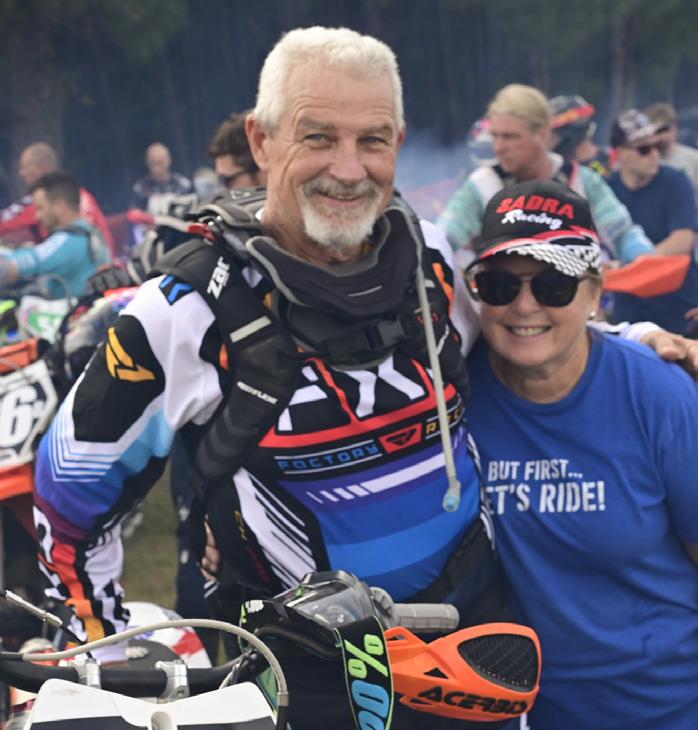
As I sit here looking out the window and watching all the vehicles claim their campsite for the weekend, the excitement starts to build as we are winding down our hare scramble events. While just getting back from a mudfest (can you say Talladega) , it’s a pleasure to have sunshine and warm weather grace our weekend. As this weekend is HS #8 with one more at the OSDR location, we have several more events on the calendar with two in-state enduros with the Armadillo and Straight Arrow enduros and one in Georgia being the Cherokee that gives a chance to get some more seat time.
I have had the privilege of meeting with two landowners in regards to hosting an event with some very positive interaction and feedback. As I write this, one in particular may have a very good chance of getting on the schedule as we work through their hunting dates as that seems to be the only hurdle. The other property which I had the opportunity of being shown the avail-
able area had two of the three major requirements to ensure a successful weekend and that is a solid road entering the property and 30-40 acres of parking. The third is questionable with not a lot of woods, but is not off the table yet. As these two possibilities were found by someone who knew someone that knew someone that had a name and phone number of these opportunities, it just shows that you never know until you ask. Thank you to the members that connected me with these individuals as this is sometimes all it takes to score a new venue.
Oh, did I mention one is in my county and the other is about eight miles from my house just over the Desoto county line! You can bet that I will be all over either one of these or possibly both. Time will tell as it’s a waiting game right now, but these are at the top of the list and a top priority.
Thanks for listening, Randy Faul
Betty and I live in the Daytona Beach area. We just finished the biggest motorcycle rally in the world; Bike Week 2025. As always, it is a true celebration of the motorcycle in all forms. From vintage bikes to cruisers, customs and sport bikes to all types of dirt bikes (motocross, hare scramblers, trials and flat track), it is there to see and enjoy.
The greater Daytona Beach/east Volusia County area has a population of 250, 000 residents. Bike Week added an additional 700,000 for the 10-day event.
One of the biggest themes among all riders that attend is the blessing of freedom. Freedom to gather, to shop, to enjoy the various activities and of course, freedom to ride!
As believers in Jesus, we are guaranteed freedom over sin and darkness.
Betty y yo vivimos en la zona de Daytona Beach. Acabamos de terminar el rally de motos más grande del mundo: la Semana de la Moto 2025. Como siempre, es una verdadera celebración de la motocicleta en todas sus formas. Desde motos clásicas hasta de paseo, customizadas y deportivas, hasta todo tipo de motos todoterreno (motocross, trialo y pista plana), está ahí para ver y disfrutar.
El área metropolitana de Daytona Beach en la parte este del condado de Volusia tiene una población de 250,000 habitantes. La Semana de la Motocicleta sumó unas 700,000 personas más en el evento de 10 días.
Uno de los temas más recurrentes entre los participantes es la bendición de la libertad. Libertad para reunirse, comprar, disfrutar de las
John 8:12 records that “When Jesus spoke again to the people, he said, "I am the light of the world. Whoever follows me will never walk in darkness but will have the light of life."
Acts 13:38-39 states “Therefore, my friends, I want you to know that through Jesus the forgiveness of sins is proclaimed to you. Through him everyone who believes is set free from every sin…”
Galatians 5:1 continues the guarantee of freedom from our sins “It is for Freedom that Christ has set up free. Stand firm, then and do not let yourselves be burdened.”
Freedom from our guilt over past mistakes, freedom in knowing that as a believer in Jesus, our future is secure forever in Him.
diversas actividades y, por supuesto, ¡libertad para montar!
Como creyentes en Jesús, tenemos garantizada la libertad sobre el pecado y la oscuridad. Juan 8:12 registra que cuando Jesús habló de nuevo a la gente, dijo: “Yo soy la luz del mundo; el que me sigue no andará en tinieblas, sino que tendrá la luz de la vida”.
Hechos 13:38-39 dice: “Por tanto, amigos míos, quiero que sepan que por medio de Jesús se les anuncia el perdón de los pecados. Por medio de él, todo aquel que cree queda libre de todo pecado…”.
Gálatas 5:1 continúa la garantía de la libertad de nuestros pecados: “Es para libertad que Cristo nos liberó. Manténganse firmes, pues, y no se dejen agobiar”.
Colos-
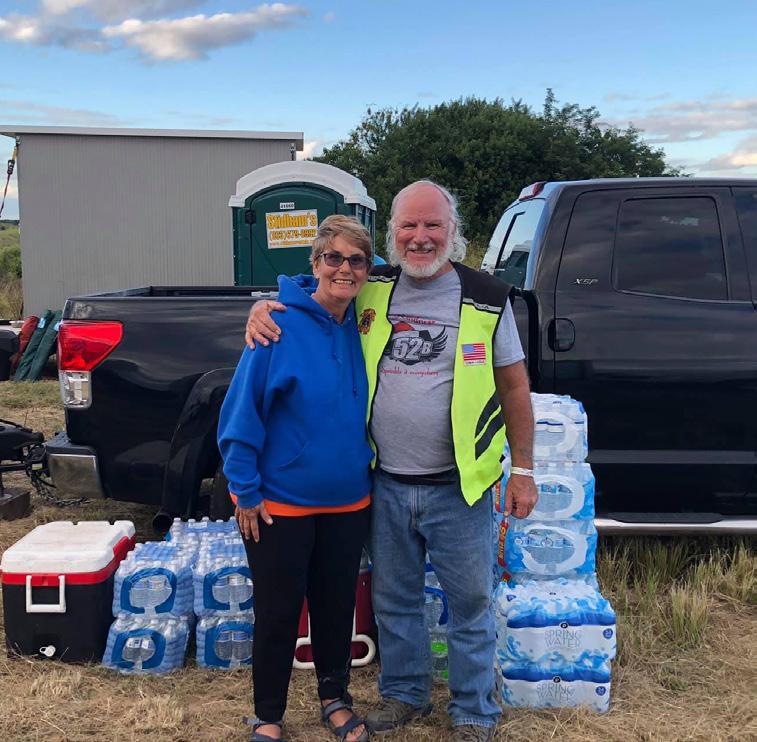
sians 1:21-23 sums it up like this; “He has delivered us from the domain of darkness and transferred us to the kingdom of His beloved Son, in whom we have redemption, the forgiveness of sins.”
With Jesus as Lord of our lives, we have a personal relationship with Holy God and no one, nothing, can ever separate us from His love. That is true Freedom!!!
Blessings on and off the road, Jim and Betty Edleston (386) 235-1022
Libertad de nuestra culpa por errores pasados, libertad de saber que, como creyentes en Jesús, nuestro futuro está seguro para siempre en Él.
Colosenses 1:21-23 lo resume así: “Él nos ha librado de la potestad de las tinieblas y nos ha trasladado al reino de su amado Hijo, en quien tenemos redención, el perdón de pecados”.
Con Jesús como Señor de nuestras vidas, tenemos una relación personal con el Dios Santo, y nada ni nadie podrá separarnos de su amor. ¡Esa es la verdadera libertad!
Bendiciones desde la carretera y el monte,
Jim y Betty Edleston Capellán de FTR (386) 235-1022

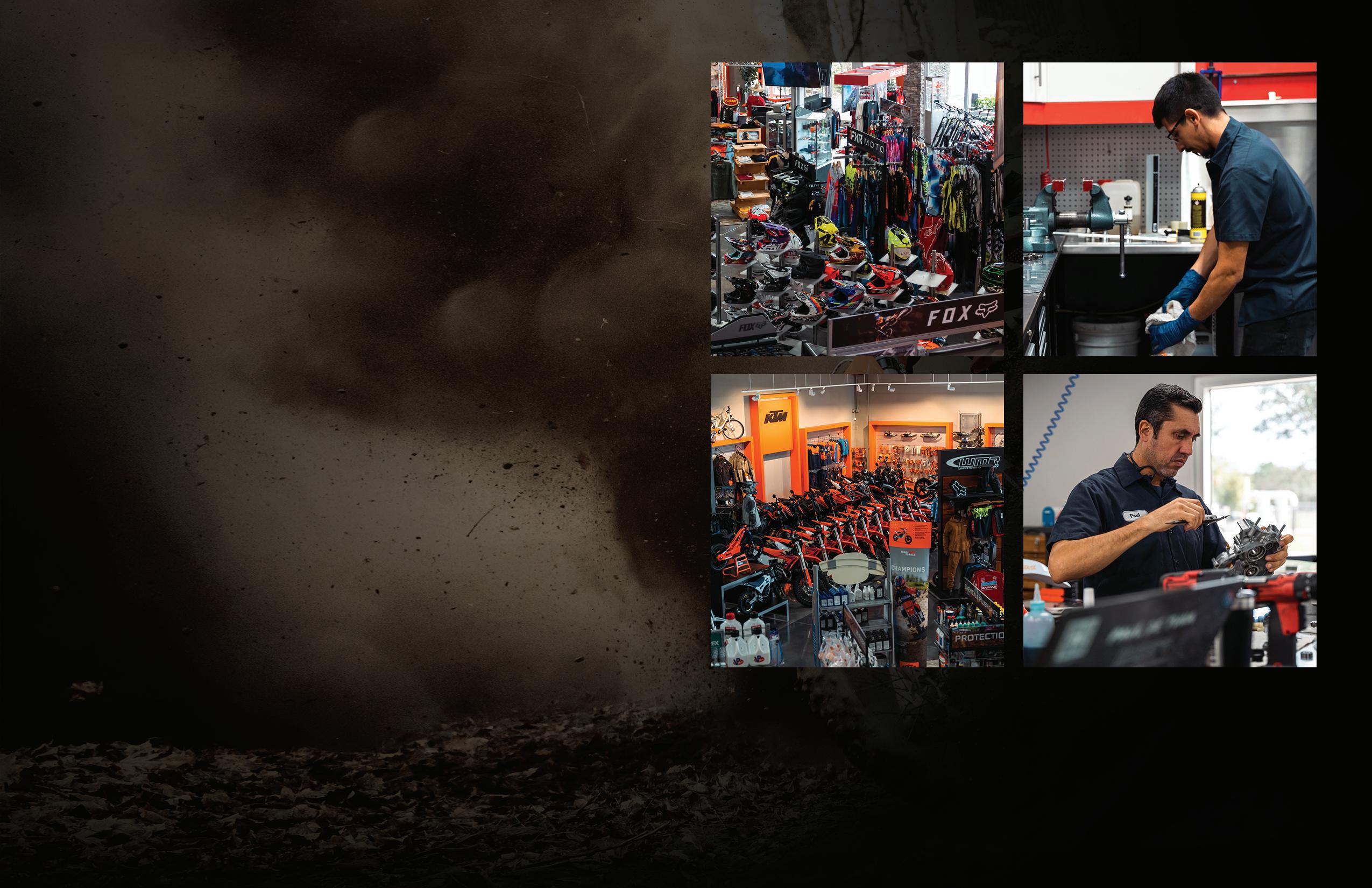
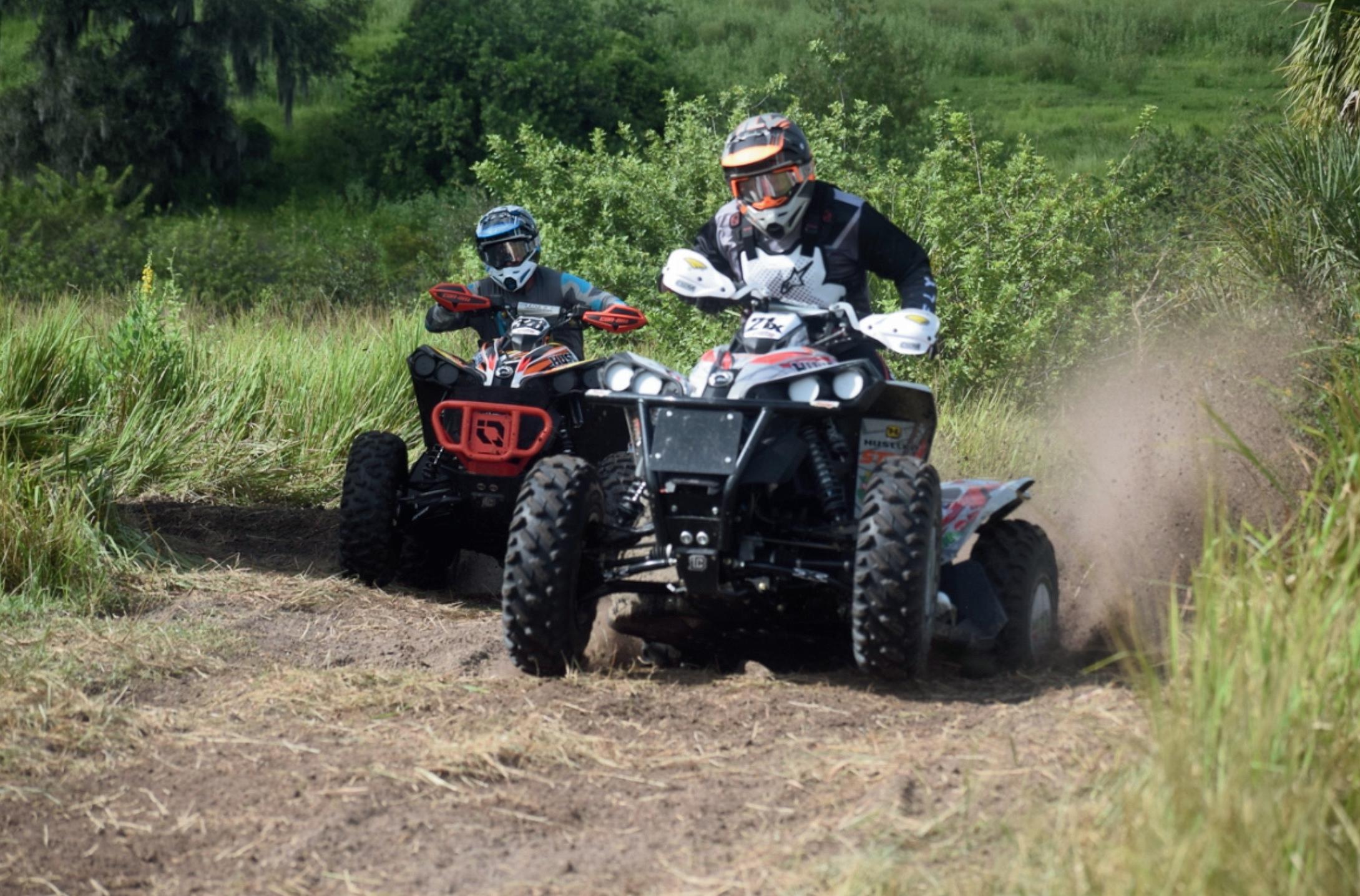





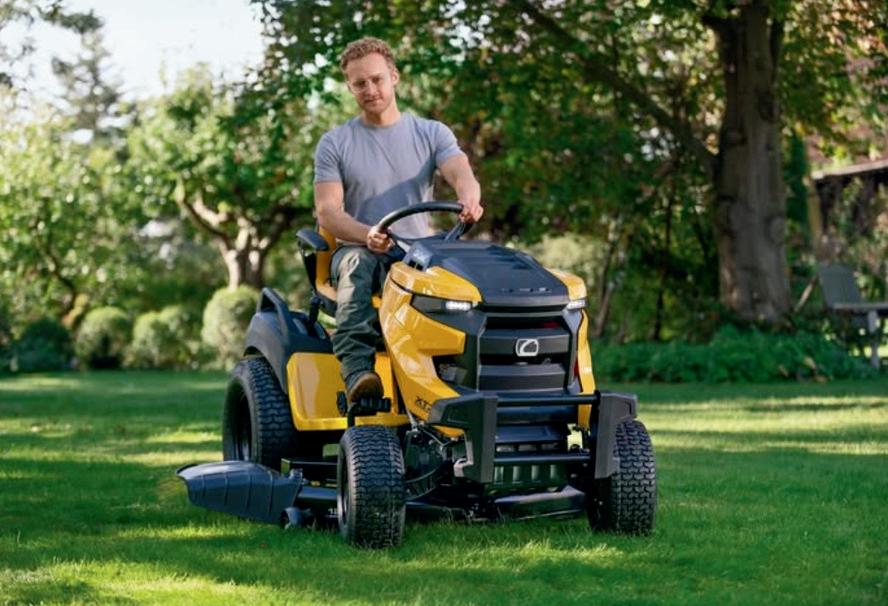





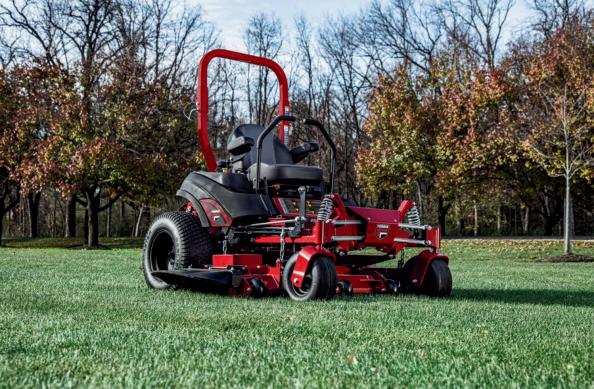


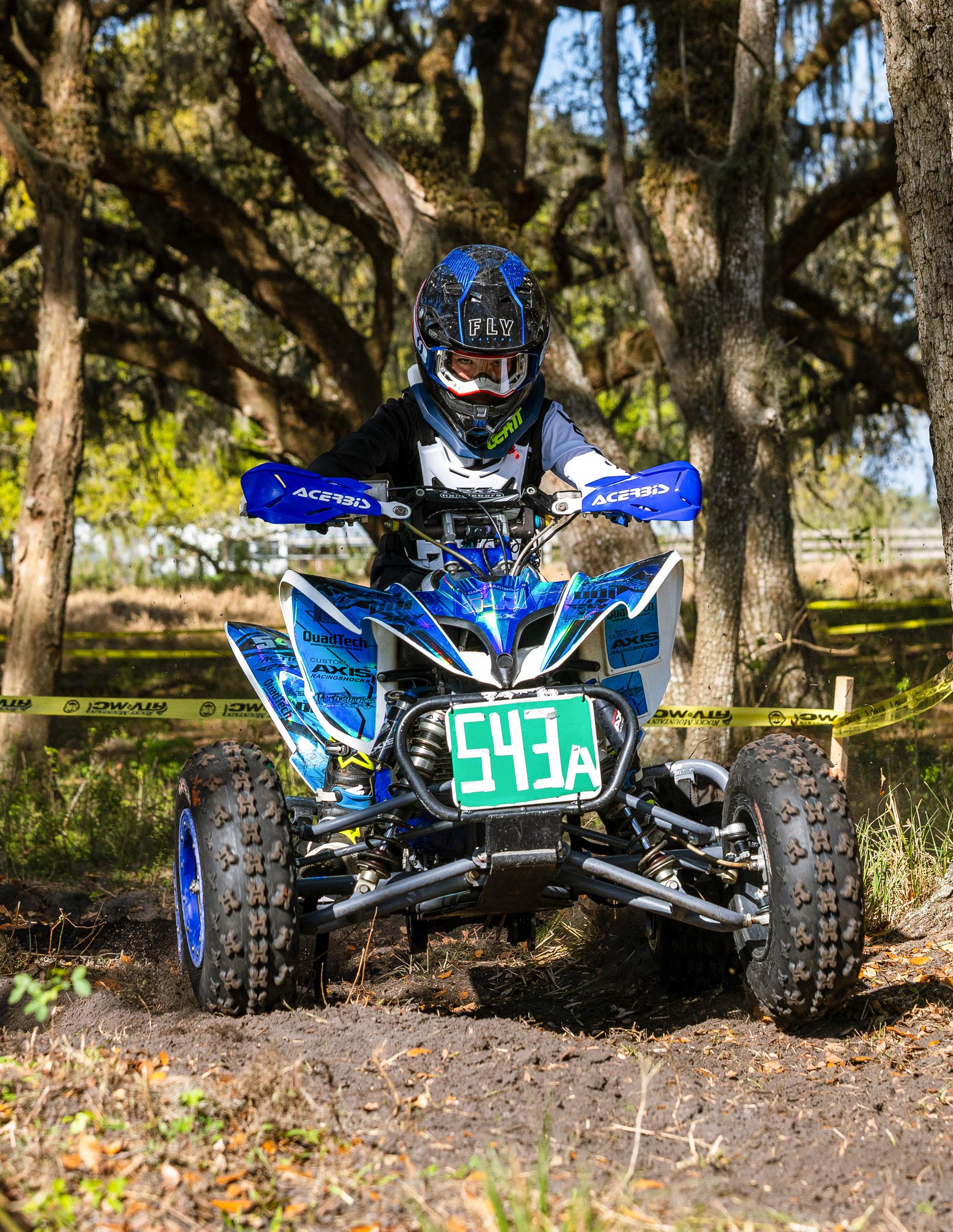
Thanks to the sponsors of the Safety Team
Most articles and movies place the credits at the end of the story. However, the sponsors and contributors to the FTR Safety Team have played such a big role in its success that they are first in our story. FTR owes them a big debt of gratitude...they help the safety team help you! Thank you to the following folks who have made significant contributions to the success of the Safety Team:
Can-Am
Central Florida Power Sports and owner Jason Ennis
WMR Competition Performance Motorcycles, owners Bob and Joe Brewster
East Coast Screen Printing and owner Scott Dawson
Scooter’s (amazingly delicious)
Food Truck and owner Scott Haskell
HBD Motografx and owner Ronnie Hames
TF Racing Suspension and owner
Tom Fleming
American Import Auto and owner
Jeff Hazeltine
Seat Concepts and Randy Faul
SeaVison Underwater Lights and owner Randy Rash
Drymon Refrigeration, Inc. and owners Bill Drymon, Stuart Drymon, and Brittany Drymon-Dugre
George Pollard at WMR Competition Performance Motorcycles
On to the story…
There are multiple off-road racing organizations across the nation… GNCC, SETRA, SERA, WORCS, NEPG, ECRA, VHCHSS, VCORR, TORCS, TCCRA…yada, yada, and more yada (for good measure). The largest of these, the Grand National
Cross-Country Series, is a professionally managed, for-profit organization that pays separate work groups to arrive early, lay out the course, register entrants, score the event, and clean-up after the event. GNCC can usually find the best mud.
The second largest racing group in the U.S. is Florida Trail Riders. In contrast to GNCC, FTR events are laid out by volunteers, managed by volunteers, and clean-up completed by volunteers. With the exception of the computer stuff, all FTR events are completely managed by the volunteers of the local clubs. Again, in contrast to GNCC, FTR clubs usually try to keep folks out of the mud.
Of all the racing groups, FTR has been the leader in the off-road community for more than 50 years. From race organization, land management, sound mitigation, conservation, congressional lobbying, and industry support, FTR has been a force to be reckoned with. This leadership sets FTR apart from those other organizations.
Another ginormous area that sets FTR apart is its attention to rider and family safety. For the last 21 years, the FTR Safety Team members have brought their public service experience into FTR and provided an example of how to successfully mitigate the risks involved in our sport.
So, what exactly does the FTR Safety Team do? And, who are they? Inquiring minds want to know…
The idea for a medical team was hatched in 2003 when a crazed scientist approached President Randy Faul with a cockamamie idea to put medical personnel on the trail and scrape up folks who skipped a riding lesson…or two. Randy raised one eyebrow, cocked his head to the
side, and, after seeing the merit of the idea, said, “let’s do it”.
With lots of brain-storming, behind the scenes negotiations by the hare scramble referee, and some inspired recruiting of skilled folks as resources, the group has expanded over the years into a team of volunteer medical folks and trail-savvy riders who seem to show up lickety-split after some of a racer’s worst adventures. It has moved from just a couple medically-trained professionals to a whole group of folks who assist with event safety. Who would have thought, more than 20 years ago, that FTR would have a team of 13 active medical and support folks who take care of the FTR family? No racing organization in America can match that effort!
One thing to note before we go much further…the team is all VOLUNTEER. No member has ever been paid for their time and effort. In fact, even the supplies that are needed by racers or spectators for injuries, were paid for by the safety team coordinator or its members out of their own pocket until recently.
With a singular purpose and the support of the mother ship, the team has gradually taken on more responsibility to help ensure that little injuries do not become major issues. Let’s look at some of the roles that these guys take on.
The major role of the safety team is the emergent response to racer and family medical crises along with risk mitigation for the duration of a sanctioned event.
While local ground ambulance service is always available during a race, the safety team arrives early Friday and is on site until late
Sunday...typically, one of the last to leave an event. The safety team is always available for questions and to address urgent medical needs. As noted in the short biographies below, the medical team is comprised of paramedics, air ambulance/ trauma flight nurses, and a token physician. They typically have the answers to most medical questions or know where to find the answer… especially if it relates to bones and blood…ewwwwwww…
Preparations for an event start with the safety team coordinator who contacts local authorities to apprise them of upcoming events. This contact includes local law enforcement, medical response teams, and fire departments. Coordination of the event’s ground ambulance arrival and departure is managed by the team coordinator. This includes managing the arrival of a second ambulance when the first is involved in transporting an injured rider off the property.
Securing a “landing zone” for the air ambulance is a critical function of the team. While the air ambulance is not “on-site”, the management of the landing zone for the chopper, and a clear access path for ground transport, provides a mechanism to rapidly evacuate life-threatening emergencies. The helicopter is typically able to arrive within less than 5 minutes after a call from the medical team coordinator.
On Friday, a member of the safety team pre-rides the course. This helps identify medical evacuation routes, safety hazards, areas that may benefit by club member monitoring, and areas that might lead to misadventures or injury.
Members of the team are also onsite to help with any injuries, such as unintentionally stapling one’s finger or machete injuries, that may occur in the last-minute rush to finish trail marking. No names will be mentioned here, if only to protect the innocent.
Fridays are also used to review the parking area layout with special attention given to fire lanes and evacuation routes. Fire lanes are critical as they permit access by both emergency medical personnel and fire suppression specialists. The team assists the promoting club with fire safety when the racers start pouring into the parking area…and that includes helping keep fire lanes open. Yes, that means the folks in orange shirts (sometimes in pink) may ask you to move when you park in the fire lane to “go to sign-up”.
Florida is notorious for brush fires. Our lack of seasonal rain, combined with heat, increases the risk posed by fire. Dried grass can burn quickly and if a fire were to occur, with lots of flammable substrate (dead grass) and accelerant (gas used for motorized vehicles) in almost every campsite, it could be catastrophic. As you may recall, we had a fire under a camper at the PBT&T event. Please keep a fire extinguisher in your campsite.
Those of you who rode the Bartow event last year remember a brush fire on the marked trail. Club members, the safety team, and a couple of photographers showed up quickly with fire extinguishers. They stomped on the fire with their Gaerne’s, Timberlands, and AlpineStars and re-directed racers around the rapidly developing danger.
In an effort to address future similar issues, team Coordinator Donny Richardson has managed the logistics of adding a dedicated Fire Suppression Team to the safety team. This new addition has brought in a dedicated side by side with water tank and pump to respond to incidents at any location on our race properties. (You may see them on the property with red “FIRE SUPPRESSION TEAM” T-shirts).
During an event, the safety team monitors the event radio communications constantly. There is never
a time when a team member is not available. In addition, the team maintains a constant presence in the parking area, typically near the starting grid. It’s easy to identify the team as they have the thin blue line flag flying high over their outpost. At night, it’s illuminated with red, white, and blue LED lights.
During practice on race days, a majority of the team is motorcycle-mounted on the marked trail. This allows the team to re-assess any changes the local club has made to the course and keep medical team accesses open.
During races on Saturday and Sunday, most of the team is either on a bike or in a side-by-side. Jason Ennis, owner of Central Florida Power Sports, has been instrumental in providing the safety team’s Yamaha RMax and CanAm Defender sideby-sides. The side-by-sides function primarily to transport medical supplies and injured riders who are unable to ride their bike out of the woods. (So, if you block-pass Mr. Ennis during a race…at least smile, thank him, and apologize on your way past him…that’s funny if you know that very few people can get close enough to even think about passing him during a race).
At race time, team members are present through the first few turns where racing is typically hot and heavy. One member is always posted within the first couple turns to communicate with the race starter at the starting line. This serves to prevent pile ups and to ensure the safety of folks who may have been incidentally detained by misadventure and have ceased forward motion.
Often times, a safety team member is physically stationed down the trail at some of the more difficult obstacles “just in case”. Other members are distributed across the entire course in an effort to quickly access, assess, and evacuate injured riders.
Multiple safety team members follow unattended younger riders
during practice and also during the Saturday race event. An underappreciated task is the assistance the team provides to the little people who may have difficulty navigating the trail or just can’t start their bikes after stalling. Certainly, talking with a crying 7-year-old, standing next to a 65 cc bike, because they stalled and can’t start their machine, does take a little patience…but the team helps with an encouraging word and a smile. It’s always hysterical to watch Harry or George (both 6’ 4”) kick starting a mini bike for a little tyke. Fortunately, most members of the team have raised little people and have been through the process at least once. In fact, several of the team members are grandparents a couple times over.
One of the impressive things about safety team members is their riding skill level. As you can see in the biographies below, most of these guys are highly skilled with years of riding experience. With laminated maps (the cheat codes) of the race course taped to their front fenders, they can typically arrive at an injured rider within a couple of minutes after identifying an injured rider’s location.
When an injury is alerted, multiple members of the team arrive. Coincidental with the attention to a downed rider by the medical guys, other members of the team re-direct traffic and aid in clearing the obstruction…all to help avoid creating a larger hazard.…kinda’ like when they shut down lanes on I-4 or I-75 for a fender bender.
In addition to on-site assessment of injuries, the team coordinator will contact family members if additional actions are warranted. This may include pulling a racer’s family or friend off the trail to let them know what has happened or if their assistance is required. Contact information is kept with FTR scorekeeper in the sign-up trailer. This is why it is critical to have your correct emergency contact information on file with FTR…please check to be sure
your emergency contact is correct next time you go to sign-up. ScanID365.com is a great system to communicate emergency contact information, especially if you ride Croom or Wandering Wiregrass.
Joy of all joys…the least fun part of the job…
One of the more unpleasant tasks that the team assists the local club with is pit patrol. It is a daunting task and it requires folks who can talk candidly. Pit riding has long been an issue with folks who don’t bother to read the handouts given to them at the gate and it threatens the loss of properties and future races due to the perceived liabilities and overabundance of litigious personal injury attorneys. The safety team makes a valiant effort to assist the local club and FTR officials in calling out underage pit riders, night riding, excessive speed, reckless riding, and overloaded vehicles, in an effort to help ensure safety and reduce the opportunity for unforeseen events to occur. Certainly, this is undesired responsibility as no one likes to be tell others that their behavior is inappropriate.
So, who are these folks on the Safety Team? (In alphabetic order arranged chronologically with some extrinsic randomness due to budgetary constraints)

is the owner of Underwater Lights USA and Down South Customs… businesses which provide advanced customization of both automobiles and custom marine yachts.
Active in FTR since 1988, he has been the Hare Scrambles Chairman for several years and has been with the safety team since 2011. Randy is an “A” rider who competed in the International Six Days Enduro and has ridden in multiple off-road locations such as Utah, Colorado, Baja, Panama, and Costa Rica. Let’s just say Randy enjoys riding any place he can find dirt (or rocks).
Randy’s sons, Dylan and Max, started racing the FTR PeeWee class and advanced to the Pro class.
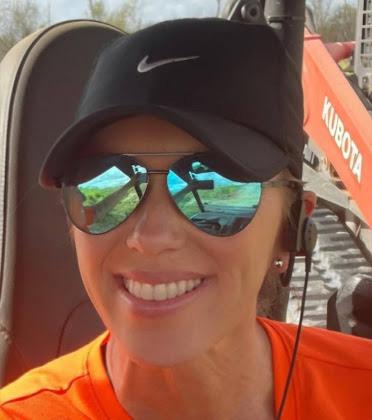
When you hear the roar of dirt bikes in the Florida wilderness, there’s a good chance Karin is somewhere nearby—either running the course in her side-by-side, hauling an injured rider to safety, or cheering on the racers. She joined the FTR safety team in 2010 and never looked back. She is married to safety team Coordinator, Donny, so keeping riders in one piece is a family affair.
Randy is a graduate of the University of Rhode Island. While “up yonder”, he worked as a yacht captain and shipyard manager. He
Off the track, Karin spent 27 years as a battalion chief in fire rescue and 8 years as a SWAT medic with the sheriff’s office, making history as the first female in both roles. When not wrangling riders or first responders, she’s pounding pavement in half and full marathons
around the world…including New York City, Chicago, and Tokyo.
Riding runs in the family—her stepdaughter Amanda and son-inlaw Trae hit the trails with FTR from time to time, and her grandsons, Jack and Graham, are practically destined for dirt bikes…with any luck, they’ll be tearing up the track…before they’re out of diapers.

Brittany started motocross next to Bubba and Mookie as a PeeWee. Later, as a teen, she raced FTR Hare Scrambles where she got hooked on the T’s, the speed, and adrenaline of racing others her age.
Fast forward to today, and she’s still living that adventure—only now, it’s a family affair. Married to Brian, the FTR Area 9 Director, they are raising two boys, David (14) and Corbin (8), who have embraced the sport with open arms. Whether it’s races, camping, or just a weekend ride, the dirt runs deep in the family’s blood and is woven into the fabric of her family’s adventures.
Brittany is the proud co-owner of DRC Offroad and the Business Office Administrator for Drymon Refrigeration Inc. She’s also the niece of Mr. “tens seconds”, Bill Drymon.
Brittany has been a part of the FTR Safety Team since 2022. She tabulates, maintains, and transmits the AMA-required FTR race records to fulfill insurance requirements. Most often you’ll find Brit riding shotgun in the FTR side-by-side with Karin.

Willy’s first Hare Scramble was the 1975 PBT&T event on a Yamaha MX100. The event was completely submerged but he rode open practice all day Saturday and raced on Sunday. He has won several class championships since that time and has “retired” to the medical team.
Willy has worked for Miami-Dade Fire Rescue for over 25 years as a Paramedic, Fire Officer, Air Boat rescue instructor, and search and rescue diver.
When asked why he joined the medical team many years ago Willy told this story:
“Prior to the Okeechobee race, I got a call from Randy Rash who asked if I could help at the race as a Course Marshall. It was at this race that I overheard a call on the radio for a medical event that I thought I could be of assistance. I showed up to the scene, found Randy doing CPR, and ended up doing chest compressions for a Cardiac Arrest with Donnie Richardson…who I had not yet met. (It is funny how people with a lot of experience in the EMS world can work a cardiac arrest together having never met each other).
After the event Donnie asked Randy who I was, because “he was halfway decent paramedic” and Randy replied, that I was a “pretty good rider too.” It was then I decided to join the cast of characters on the safety team. It is nice to give back to an organization that I grew up in and continue the family tradition for
the next generation.”
Willy has been married to Theresa for 24 years and they have one daughter, Alyssa, who is almost 20, and a son, Austin, who is almost 18. Austin is carrying on his dad passion and often runs sweep for an event.

Levic Allen has been on the team since the beginning…He recruited Donny to FTR and Donny recruited Levic to the team. Levic became an EMT in 1989, working for Manatee County EMS, then moved on to paramedic in 1995. He has been with Hillsborough County Fire Rescue since that time and currently serves as a rescue lieutenant. He has served as a member of special operations with direct authority during Hurricane Katrina and Charlie event operations. Levic has been a Tampa General Hospital AeroMed flight medic for 15 years.
Levic was awarded Paramedic of the Year by Hillsborough County in 2023.
He is an “A” rider and rides many of the enduros when not helping with the safety team.
Carol Preston
Carol grew up in Portland, Oregon where her family members were all off-road riders and racers. Carol’s first official off-road race was in Oswego, Oregon in 1968 on a Yamaha 100...she was “last, but I got better.” Her results bear that out…she won 3 FTR year-end MX classes and 4 HS classes. She has ridden in multiple

states from Oregon to Florida.
After college, Carol joined the US Air Force and is a 16-year veteran where she spent time in Korea, England, and 7 state-side bases. In the military she trained in the medical field and 3 other fields.
Carol joined FTR in 2006 and the safety team in 2008. She previously served FTR for several years as the Motocross Series Chairman.
Carol says, “FTR is my extended family…they are a great group of people and I’m honored to be a part…I’m still doing it and I love it”.

Donny moved to Florida 35 years ago from Boston.
He joined FTR 25 years ago, at the urging of fellow medic Levic Allen. After racing multiple events, he gave it up when he realized he was stopping to help more riders than he was racing.
In 2005, Donny became the leader of the medical team, which then expanded into the safety team as it assumed more responsibility. Incredibly, he has missed only 1 Sunday of racing (Karin’s 1st New York City marathon) out of more than 200 sanctioned events over that time span.
As Coordinator of the Safety Team for the last 21 years, Donny has overseen the expansion of safety team responsibilities, addition of necessary medical equipment and resources, advanced improvements in safety, and provided valuable resources to FTR leadership and families. Donny’s insight and “thinking outside the box” have led to many risk mitigation strategies, innovative changes in operations, and reductions in response time to urgent situations.
Donny started his medical career in Fire Rescue and served in the ER and ICU. He has been serving as a Flight Nurse/Paramedic with Tampa General Hospital’s AeroMed air ambulance service for almost 25 years. In addition, he developed treatment and transport programs for law enforcement K9 units and now teaches K9 care to law enforcement and fire rescue agencies.
You will most often see him racing around in 6th or 8th gear heading to assess an injury but he does still race an occasional enduro in the A class.

Larry Kuhn
Larry and Donny met under an oak tree in 2003 while waiting for their kids to pass at a Hare Scramble… the medical team was started soon after.
Larry entered the 1975 Astronaut Trail Enduro on a street-legal 10 HP Honda SL 125 that he rode to the event, raced, and then rode back home. The following year he finished the same event on the podium riding a 1976 Husky WR 360. He has been a member of Apollo Motorcycle Club, Central Florida Trail Riders, and currently entertains members of the Daytona Dirt Riders, and Mike McGuire, with his humorous quips.
Every team needs a AA class rider. Coon dawg is the safety team’s token AA rider…. AA(RP). No stranger to administrative tasks, he has served as an FTR Area Director, Scholarship committee member, and was selected Sportsman of the Year in 2005. Larry is Assistant Professor of Anesthesiology in the UCF College of Medicine, is currently serving our nation’s veterans at the Orlando VA Medical Center, has served as team physician for the USA team at the International Six Days Enduro, and is a Florida-licensed dentist (retired since 1986).
Larry’s family co-founded Saving Grace in Uganda, a ministry to save street kids from famine, police brutality, and the devastation of warlord Josef Kony.

George first raced FTR events in 1983 and advanced to the A class. He has been active in the administrative side of FTR, serving as an FTR Area Director and Palm Beach Track & Trail motorcycle club Vice President.
In perhaps his most important role, George was the Hare Scramble Referee for 3 years. It was his influence that negotiated past the initial reluctance of local clubs to allow non-club medical personnel onto the race course during an event. With his quiet, humble demeanor and mild-mannered approach, George was able to open the door of opportunity for the medical/safety team to become the overwhelming success that it is.
George is a brilliant fella’. He has more knowledge of mechanics than Google. He has worked as a KTM mechanic for several prominent GNCC racers and currently spends Saturdays working at one of the sponsors locations, WMR Competition Performance in Stuart.
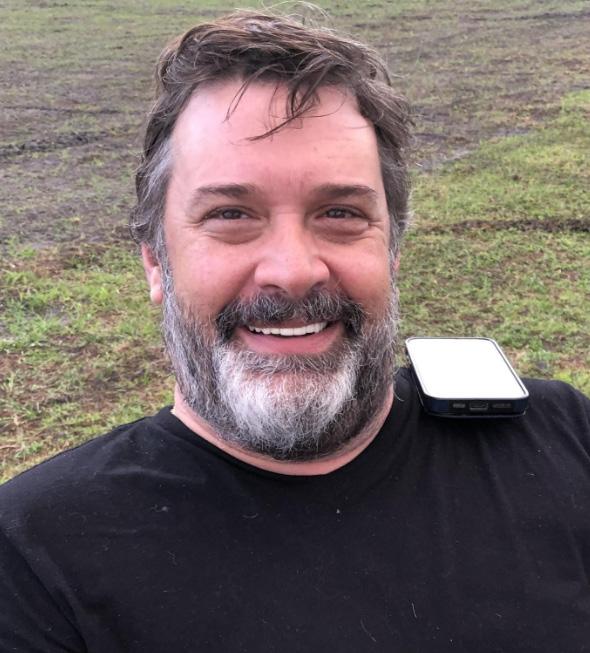
Harry joined FTR in 2010 and raced for 5 years before joining the safety team. He has been a part of the Suncoast Trailblazers and Apollo Motorcycle Club.
He is the heavy-lifter of the safety team…the muscle. Fluent in multiple languages, he is a quiet and humble fellow with many talents. Harry can check tire pressure with one hand, eat a sandwich with
the other, and place an order with RMATV while on his cordless.

Before diving into the racing scene, B.C. worked as a medical engineer in the hospital field, sharpening his skills in precision and care. But his roots run deep-in the soil – literally. Following in the footsteps of his father, B.C. spent much of his life as a nurseryman, growing plants, cultivating landscapes, and nurturing life. These days, he applies his hands-on knowledge in construction, helping to build the future.
B.C.’s journey is nothing short of adventurous! Starting his racing career in 1974, B.C. made a thrilling shift to motocross in 1979 and then jumped into the world of Hare Scrambles, where he raced with passion for years. Over the past decade, B.C. has turned his focus to safety, lending his expertise to safety teams and ensuring everyone stays safe while they chase their adrenaline. When he’s not building, racing, or ensuring safety, B.C. is giving back to the next generation through volunteer work. He dedicates his time to youth programs like 4-H, Future Farmers of America (FFA), and Youth Leaders in Production Agriculture, shaping the leaders of tomorrow.
From racing tracks to construction sites and cultivating the future, B.C. Drymon has done it all with heart and dedication!
Fire Suppression Team-Brianna and Ronnie Avirett
Brianna relates the following story of the team’s beginnings: “When the fire started at Bartow, Ronnie and I happened to be on scene…right there. We both jumped into action to help douse the flames. Immediately afterwards, Ronnie thought of ways he could possibly help prevent anything like it happening again. He went to Donny and Randy Faul with his ideas. After a little brain-storming, the Fire Suppression Team was created.”
Brianna started in FTR back in 2001 watching her dad race. “Didn’t take me long at all to fall in love and get involved with racing myself. Fast forward 20+ years later and I have my own photography business, Avirett Photography, so I can still be actively involved in FTR. I love every minute of it!”
Ronnie has been a part of FTR for approximately 24 years. When he isn’t next to the trail, being the famous “Avirett Photography” sign holder for his daughter Brianna, he’s out in woods in his machine doing the work he loves best, clearing land for fire prevention. Ronnie first got into the fire suppression business because, let’s face it, turning a tree into mulch in seconds is pretty cool. But, also, the benefits of clearing all that underbrush are the number of homes it saves each year by clearing the fire hazards it can present.

WORDS: DR. MATT DAUGHERTY
Orthopedic Physical Therapist and Racer
If you’ve ever ended a moto with forearms that feel like concrete and hands that barely work, you’re not alone. “Arm pump” is a rite of passage for many new racers. But here’s something I want every rider to understand— fast riding isn’t about grip strength.
That’s right. The best in the world aren’t clenching their handlebars like their life depends on it. In fact, quite the opposite. The elite racers know how to let go—not completely, of course—but just enough to stay loose, efficient, and in control.
It’s easy to fall into the trap of thinking more grip = more control. You hit a rough section or a big bump and your instinct is to grab tighter. But that death grip only makes things worse. It stiffens your upper body, locks your elbows, tires your forearms, and disconnects you from your bike's natural movement. You start fighting the terrain rather than flowing with it.
Here’s what you need to know: control comes from body position and lower body engagement—not from your hands.
Watch any top-level motocross or GNCC pro. Slow it down frame by frame. They’re not muscling the
bike around with their arms—they’re hugging the bike with their legs, stabilizing their core, and allowing the bike to move beneath them. Trust me, I have worked with a few multi-time world champions, and due to wrist and forearm injuries, their grip strength is forever far less than average. There are a few YouTube videos of them checking grip strength and even though they are letting the racers grip in advantageous positions some of them have less grip than an average adult male or female in their age range tested in a standardized seated position.
Your legs are way stronger than your forearms. When you squeeze the tank with your knees and stay connected with your lower body, you reduce the load on your hands and arms dramatically. This keeps your upper body free to move with the bike and react to the terrain, not brace against it.
The arms should be active shock absorbers, not tensioned cables. When your upper body is stiff, you lose your ability to absorb impact efficiently, and more vibration and force are transferred to your shoulders and spine. Over time, this leads to pain, poor endurance, and slower lap times.
Pro riders have phenomenal posture on the bike.
Their elbows are up when needed, yes—but more importantly, their shoulders are stacked, their core is braced, and their wrists stay neutral, all allowing their arms to move like springs instead of crowbars.
So Why Do So Many Riders Focus on Grip Strength?
Because it feels like the right thing to do, you lose control, the bars twist, and you think, “If I just had a stronger grip…” But more often than not, that situation happened because you weren’t connected with the bike elsewhere—your knees weren’t locked in, your hips weren’t engaged, or your core wasn’t doing its job.
Let me say this clearly: Grip strength is useful— but it should never be your primary strategy.
MotoPT’s Tips to Fix Your Death Grip:
Squeeze With Your Knees: Practice gripping the tank or seat with your legs during cornering, braking, and acceleration. Ride a section consciously without gripping the bars hard—see how it feels.
Train Your Core: Planks, dead bugs, and anti-rotation exercises (like Pallof presses) help you transfer energy through your trunk, so your arms don’t have to do all the work.
Stretch Your Forearms: Chronic death gripping leads to shortened flexor muscles and restricted forearm fascia. Stretch and roll them out regularly.
Practice Loose-Hand Drills: On a flat section or practice loop, try riding
with only your throttle hand or even just your fingertips on the grips. This builds confidence and control with less tension.
Mind Your Cockpit Setup: If your bars are too low, levers too flat, or suspension too harsh, you’ll be forced to hang on harder. Small adjustments here can make a big difference.
You want to ride fast? Then ride smart. Loosen the grip. Engage your legs. Train your core. And remember: control isn’t about clenching—it’s about connection. Let’s keep those hands loose and that throttle wide open.
Before acting on any information in this article, I recommend that you consult a physical therapist or physician for a general health and physical activity readiness screening. If you are experiencing pain while riding, it is always beneficial to have a complete evaluation by a physical therapist or physician. If you have any questions or comments, please email me at contact@motopt.com or call/text 904-395-5379. Let's IMPROVE YOUR MOVE so you can ride pain-free with MotoPT.
Dr. Matthew Daugherty
PT, DPT, OTR/L, MOT, DBA Associate Professor and Director of Residency Programs
Board Certified Orthopaedic Clinical Specialist Fellow, American Academy of Orthopaedic Manual Physical Therapists Manual Therapy Certified Intramuscular Dry Needling Certified

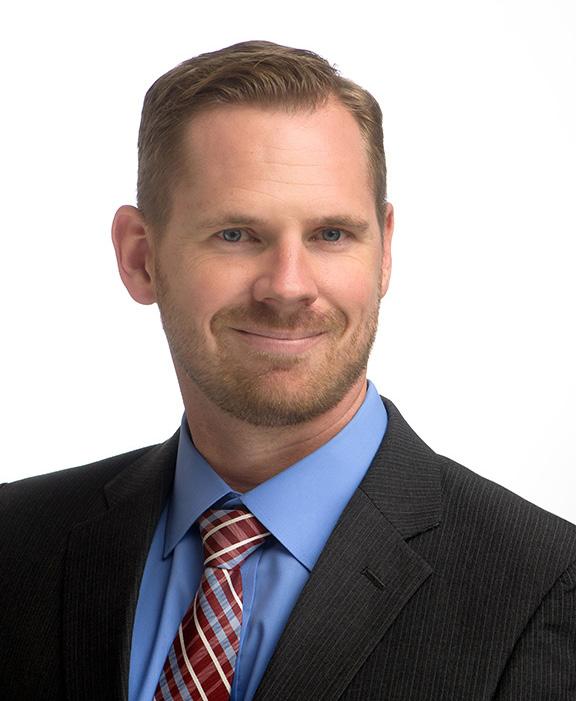
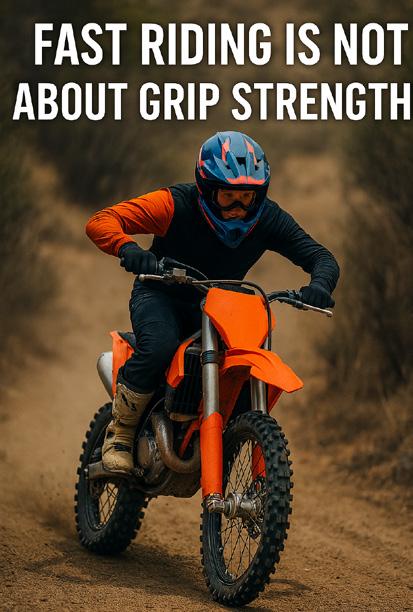
Summer’s the perfect time to show your dirt bike some lo from racing to escape the heat Whether you’re grinding t key maintenance tips to get your bike dialed for next seas Top-End Rebuild

Logging extra hours? Your engine’s likely due for a top-e and power, setting you up for solid performance when rac Bearings Check
Bearings often get overlooked, but they take a beating fr replace them to keep things running smooth and prevent Suspension Service
Whether you're getting faster, gaining/losing weight, or ju suspension shop get things dialed while you're off the bike New Tires
Still running last season’s rubber? Fresh tires improve trac consider the Dunlop MX34 front or MX14 rear Not every ti Fresh Look with HBD Graphics
New plastics and HBD graphics can give your bike that fa new sponsors, or just want a clean, updated style.
Take advantage of the summer slowdown to get ahead doing what you love: racing

For over 50 years, TF Racing has been elevating the off-road riding and racing experience for countless enthusiast while building champions on and off the track. Contact us today for a custom quote








Hey everyone, hope you're doing well! Something I feel is often overlooked when working with riders is the use—or lack of use—of our controls, particularly the front and rear brakes, as well as the clutch. Most of you probably know how to use them, but the real question is: how well do you actually know them? In my experience, whether working with beginners or pro-level riders, there’s always room for improvement in this area.
Let’s start with the most common issue I see when coaching beginners, especially younger riders: the lack of braking. Many newer or younger riders rarely use their brakes—if at all. It's surprising how many kids don’t use either their front or rear brake whatsoever. As riders progress to intermediate levels, braking usage improves, but still not to its full potential. A lot of riders waste time coasting through straightaways, which costs them valuable time. These habits can be easily addressed through braking or cornering drills. Pushing yourself out of your comfort zone to explore what your brakes are truly capable of is key.
When we look at faster B/A riders and even pros, we start to see some bad habits forming. As riders get faster, they start to rely too heavily on their brakes, which leads to “riding the brakes.” This not only causes mistakes—like standing the bike up or breaking traction—but it also just slows you down! Many riders tend to favor the rear brake, which can lead to poor footwork or in some cases, losing brake power during races. On the other hand, using the front brake too aggressively can wash out the front end, throw off your momentum, or worse, send you over the bars. Even at the pro level, working to break these bad habits is essential. Many high level riders practice no-brake drills on turn tracks or during section work, to focus on proper techniques without relying on their brakes.
Now, let's talk about the clutch. Like braking, clutch control is often underused by slower riders or overused by faster ones. Learning to use the clutch is typically something riders pick up quickly, but for beginners, the challenge usually lies in smooth clutch release or avoiding stalls. To address this, I encourage riders to keep a finger on the clutch at all times, ready to use it when needed, and to focus on smooth, controlled releases. For more experienced riders, the problem often becomes overuse of the clutch. Clutch dumping or dragging through corners is a common bad habit that unsettles the bike, ruins traction, and makes for an inefficient ride. When you pull in the clutch going into a corner, it stands the bike up disrupting the bike

and body’s connection. Similarly, dumping or tapping the clutch mid-turn can result in unwanted reactions like the front climbing out or the rear spinning out.
Now that we've covered the bad habits, let's focus on the good and how to fix these issues. These controls are valuable tools when used correctly. Mastering their use takes time, but once you understand the basics, you can harness their full potential. Brakes are essential for reducing speed when approaching corners or obstacles. The more confident you are in using your brakes, the more speed you can carry into these sections, which ultimately leads to faster lap times. At a higher level, riding the front brake in corners helps create traction and can help keep the front end down. This is something I use quite often when riding! While riding the rear brake isn’t quite as useful, it can be great for keeping the rear planted or for breaking traction when you want to. The clutch, on the other hand, is most often used to build RPMs, either to accelerate out of a corner or load the bike for a jump. It can also serve as a form of throttle control to smoothly roll over obstacles like roots, rocks, or logs.
So, how do we get rid of those bad habits? Next time you’re at the track, take some cones to a corner. Set one up as a marker for when you should get off the rear brake and maybe another one before that to mark your start braking point. This will help eliminate coasting and will help you focus on rolling through the corner with proper control. You can use your front brake to modulate your speed when necessary. For the clutch, I recommend doing no-clutch motos during practice. This forces you to rely on throttle control and momentum instead of using the clutch as a crutch.
For many riders, these controls become crutches and we’re all guilty of it at times. But being aware of when we rely on them too much—and working on using them properly—can significantly improve our bike control and comfort. Remember, you need to learn how to ride without these controls before you can master their proper use.
So, take these tips to the track, work on breaking those bad habits, and see how much your riding improves. Breaking these bad habits can be tough and even at the highest levels, riders like myself are constantly working on them. Don’t get discouraged if it doesn’t come easily—progress takes time! For more riding tips and updates on my training schedule, be sure to follow @ alexlugaroffroadacademy on Instagram or check out my Facebook page. See you at the races!





sclark@mosaicfingroup.com
Dade City is always one of my favorite harescrambles of the year. I enjoy the tight woods sections which are rare in Florida. There was a lot of talk online about the roots. That is an infamous section of this course. Although very challenging, I love that section. During the race in the afternoon, I was having my best race of the year running second overall. With one lap to go, I hit something I couldn’t see in that root section that shot me right into a group of trees. It was the biggest crash I’ve had in years leaving me sore to this day.
2025 has been a similar ride in the market. After the tariff announcement, the markets have been incredibly volatile. Many fear the worst about their retirement savings. Every time, we see a correction like this it causes a little fear and doubt about an individual’s retirement or investment plan. These unexpected quick drops can cause havoc. If you would like a second opinion about your retirement savings, I am happy to help.
Investment Advisory Services offered through Continuum Advisory, LLC, a Registered Investment Advisor, located at 873 E. State Street, Eagle, ID83616. Mosaic Financial Group is not an affiliate of Continuum Advisory, LLC but is a DBA (doing business as) of Continuum Advisory. For More information on Continuum Advisory, visit https://adviserinfo.sec.gov/firm/summary/283155

Whether you are an “A” rider or just starting out as a newbie, crashing can and will happen at some point in your riding career. These crashes can be minor where the only thing that hurts is your pride as your buddy laughs at you or very severe, causing any number of significant injuries and pain. Pain doesn't discriminate when crashing and having the proper gear could minimize a painful experience from a get off or crash. We all know that it is not a matter of if it will happen but when it will happen. Riding and racing can be dangerous, we all know that, but we don’t let that stop us, so why not do all we can to protect ourselves.
Yes, I realize that these pieces of equipment can be expensive and when buying gear for a family of racers it can add up very quickly. However, let me ask you this, what is more important than you and your family’s safety? You wouldn’t send a racer out on his motorcycle with a front tire ready to fall off, that’s dangerous. So why would you send a racer out without
the most protective gear possible?
You will spend thousands of dollars on a bike, hundreds of dollars on the latest coolest pants/shirt/gloves gear but none of that will matter if you don’t spend dollars to protect yourself and suffer an injury that ends your riding career, puts you in a wheelchair for the rest of your life or is even fatal. Now I am not here to try and scare anyone from riding/racing. Riding and racing is a passion, a love that never gets old. Most of us will agree that we are going to ride until we are physically unable to. It is in our blood.
But let’s get back to talking about how to prolong that riding ability by protecting our important parts. Yes, we have many and all of us would agree our head is important thus we wear a good helmet. So, what’s next? Your neck. For those that already wear neck braces I say kudos to you. For those that do not, I ask why? Is it the expense? Have you thought about the expense of a multiple week stay in an ICU
followed by a week or more on a medical floor ……then add to that the months or years of rehab……. you think a neck brace is expensive. Can you say hundreds of thousands of dollars? Or maybe its because it is uncomfortable……. well with many many brands and styles available today and experts to help you with proper fitment, that excuse is just that an excuse. Now to my favorite one “it causes broken collar bones” which is nothing more that a myth.
The premise of a neck brace is to redirect the forces that stress the neck onto other parts of the body. This is known as axial loading. An example of this would be going over the bars and landing on you head. Braces also work to limit the extreme range of motion in the neck during a crash known as hyperextension or hyperflexion.
Your cervical spine has 7 stacked bones called vertebrae, labeled C1 through C7. The top of the cervical spine connects to the skull, and the bottom connects to the upper back at about
shoulder level. It supports the head and its movement. The cervical spine handles a heavy load, as the head weighs on average between 10 and 13 pounds. In addition to supporting the head, the cervical spine allows for the neck’s flexibility and head’s range of motion. The most common cause of cervical injury is trauma. Yes, that means we are at risk when we take dirt or tree samples. These cervical injuries can be the result of flexion, extension, rotation, and contusion or compression of the spinal cord. Yes, you can have severe spinal damage without having a fracture.
Spinal cord injuries are described as either complete or incomplete. In a complete spinal cord injury there is complete loss of sensation and muscle function in the body below the level of the injury. In an incomplete spinal cord injury there is some remaining function below the level of the injury. In most cases both sides of the body are affected equally.
No device can prevent

all injuries and nothing in life is perfect, however I hope that after reading the following information you will understand the fact of how important utilizing all available safety gear is, specifically a neck brace.
The following are results from actual patient data taken over almost a 10-year period, is proof that neck braces are providing the results intended since their creation.
8529 patients broken down into either yes wearing a neck brace
(3803 patients) or no, not wearing a neck brace (4726 patients).
The statistics do not lie.
1. A Critical Cervical Spine injury is 89% more likely without a neck brace.
2. Death is 69%+* more likely (due to Cervical Spine Injury) without a neck brace.
3. A Non-Critical Cervical Spine injury is 75% more likely without a neck brace.
4. A Clavicle (collarbone) fracture is 45% more likely without a neck brace. There
were 443 collarbone fractures without a neck brace vs 291 with a neck brace.
5. A Cervical Spine injury of any kind is 82% more likely without a neck brace.
So, tell me again why you do not wear a neck brace? I’ll wait……….
Now get off the couch, grab your helmet, head to your favorite MX shop and start trying different styles of brace until you find yours…… you will be thankful you did when you have your next ‘Oh crap” moment that ends with you in
the dirt. Want to rea d the entire neck brace article? Go to https:// www.actionsportsems. com/case-study-neckbrace
Thanks for reading. I am always available for any questions you might have.
See ya at the track
Donny Richardson Rider Safety Coordinator
RN – EMT/P

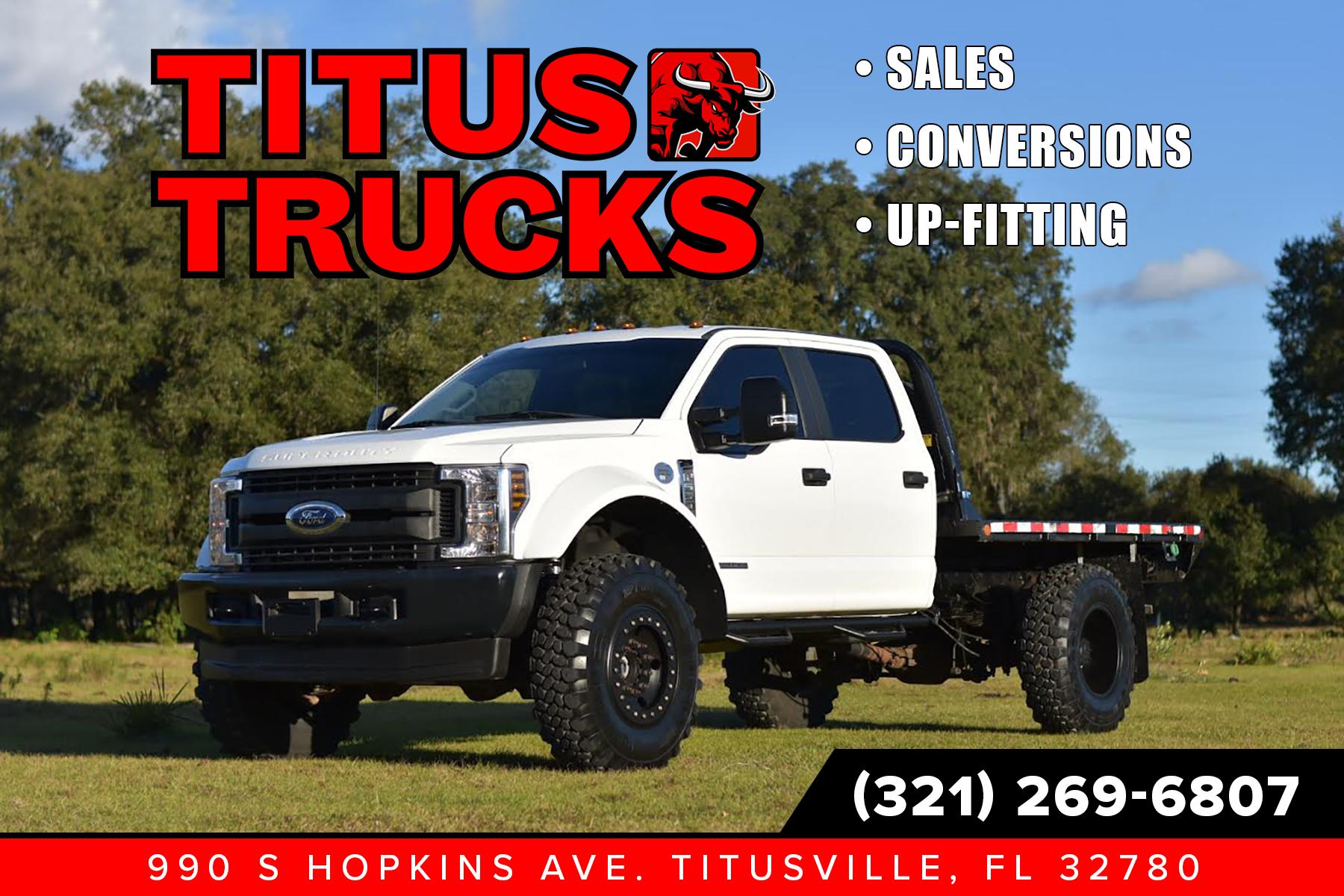





9-1-2024
9-14/15-2024
